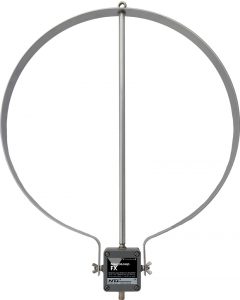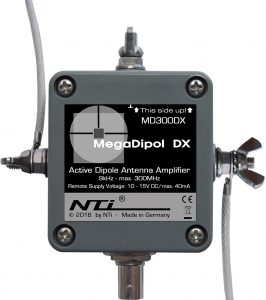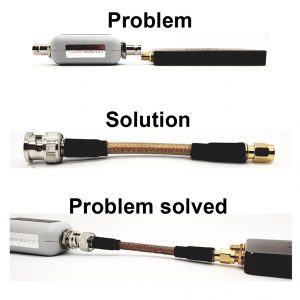Holidays
MegaLoop practical test from the USA
This is a video from Mike Ladd using our MegaLoop ML200 (direct predecessor of the MegaLoop FX). Michael Ladd does the support for SDRPLAY in the USA and already has a lot of experience with the different antennas. You can see his antenna mounting and his first impressions here:
Coaxial cable assembly N-type connector to Ultraflex 7
This is the first video of our coax cable and connector assembly video series. More will be released soon.
Coaxial cable assembly N-type connector to Ultraflex 7 from Messi and Paoloni. Continue reading
SDRPlay RSPduo – Antenna test
Let’s get started…
The SDRPlay RSPduo SDR-receiver has been on the market since the Ham Radio fair of 2018 and since then, inquiries regarding the most effective antenna to use with this SDR receiver have been almost continuous. So far, the answer has always been: MegActiv MA305FT.
Why is that?
Because of its diminutive size and low amplification, this antenna does not overload the radio and is very easy to take along on field trips.
In October 2018, Jon Hudson kindly sent me a test unit, praising its performance wholeheartedly. I have now tested this receiver, coupled to two of our larger and more effective antennas; the MegaLoop FX and the MegaDipol MD300DX.
DXpedition to the jungles of Rio Capim, Northern Brazil, with the Bonito MegaLoop FX antenna
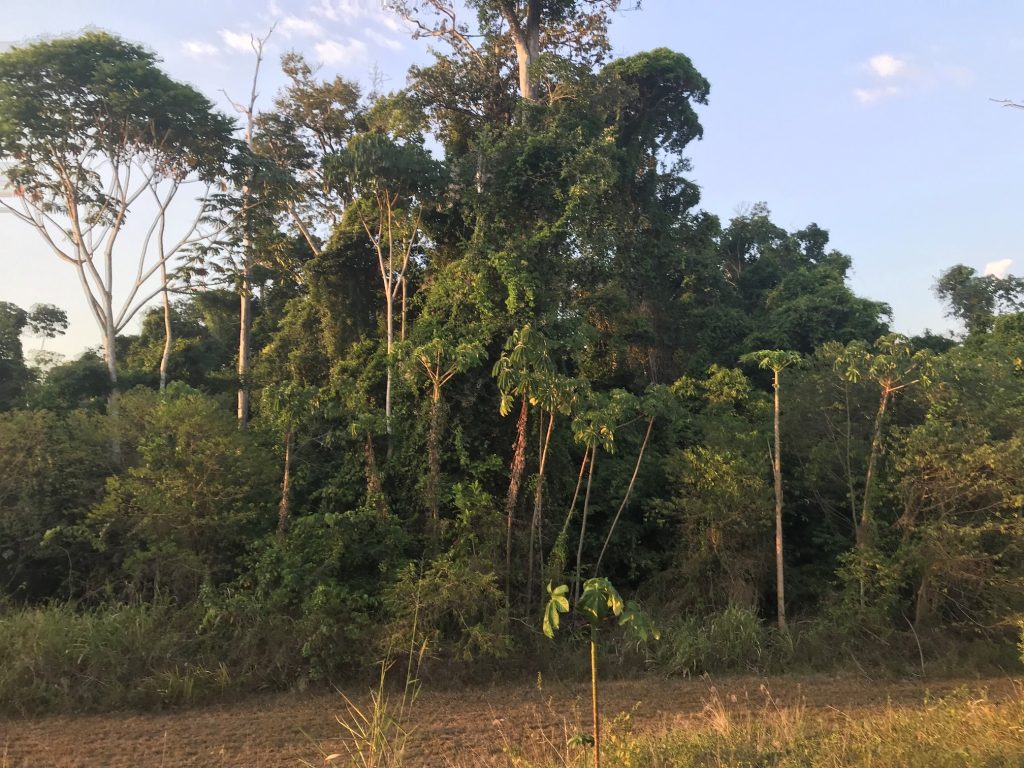
Hi there, I returned from my 4th trip to the very beautiful, if rather rugged Rio Capim area of Northern Brazil, just before Christmas. As usual, this was a business trip, but of course I always take the opportunity to DX when I’m travelling. Spending yet another month out in the jungle presented the usual problems with heat, tropical bugs and at this time of year, much precipitation, particularly in the afternoons and evenings. There are also problems with the dreaded local QRM. Even in the remotest of locations, if humans are present and using electricity, there is noise. At my temporary, tropical QTH, the lighting systems in particular generated a huge amount of noise. In the evenings, the noise floor on my SDRPlay RSP DUO with a longwire would be terribly high – sometimes around -95 dBs. This was totally unworkable of course with a standard telescopic antenna, or indeed, with any type of wire extension.
On this trip however, I had a very effective weapon in my armoury to deal with local QRM; the Bonito MegaLoop FX antenna. I have previously tested this antenna at my QTH in the UK and on my travels last year to Dublin, Ireland and Nantes in France. It proved very effective in delivering DX in noisy environments, particularly when coupled to the Bonito GI300 Galvanic Isolator. I was therefore rather excited to take this antenna back to the tropics. The beauty of my SDRPlay RSP DUO/ Bonito MegaLoop FX set up is two-fold: superb selectivity and sensitivity and complete portability. The RSP DUO is powered by my laptop – which is great because that gives me at about three hours listening away from noisy mains supplies. The MegaLoop FX can also be USB powered – and in fact will run on a cheap USB power brick for many, many hours. The loop itself is a flexible cable, rather than a rigid aluminium affair such as the Wellbrook ALA1530.
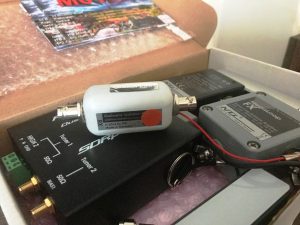
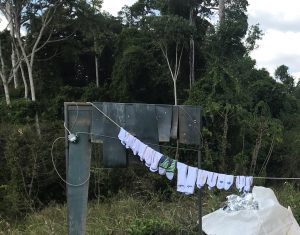
Travelling to Rio Capim involves a flight from London Heathrow to Lisbon, Portugal and then a connection to Belém, Northern Brazil. Everything was easily packed into my backpack and checked-in luggage and I had no problems at all at airport security. I took the 5 metre cable with me to Brazil and managed to hang it from a welding screen at one point, in a quiet location on the edge of the jungle. Eventually, I fashioned a simple wooden ‘cross’ for the cable to effectively create a 4 sided quadrilateral shape which is basically the geometry of a typical ‘kite’. This worked very well indeed and allowed for portable operation in and around the jungle.
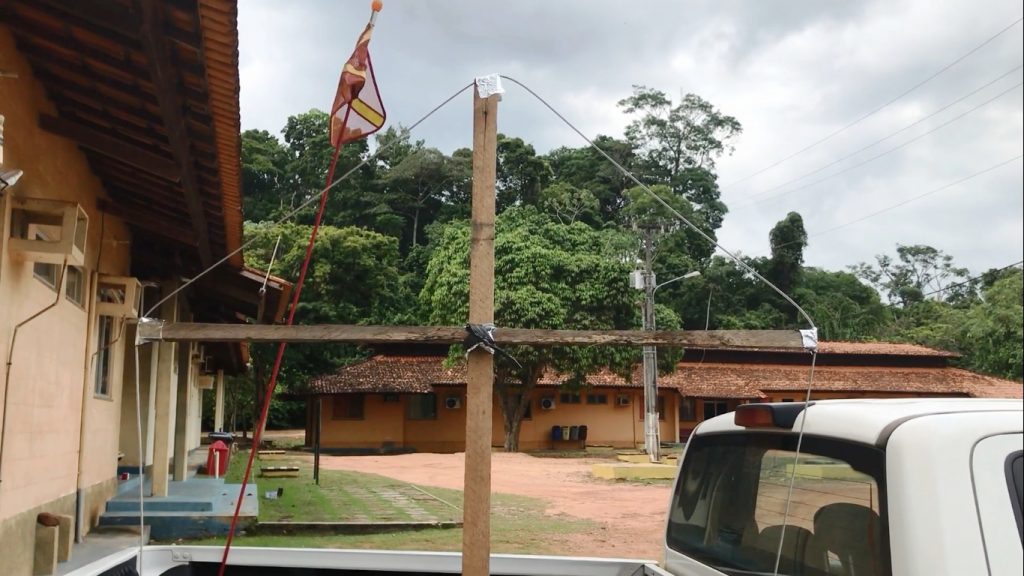
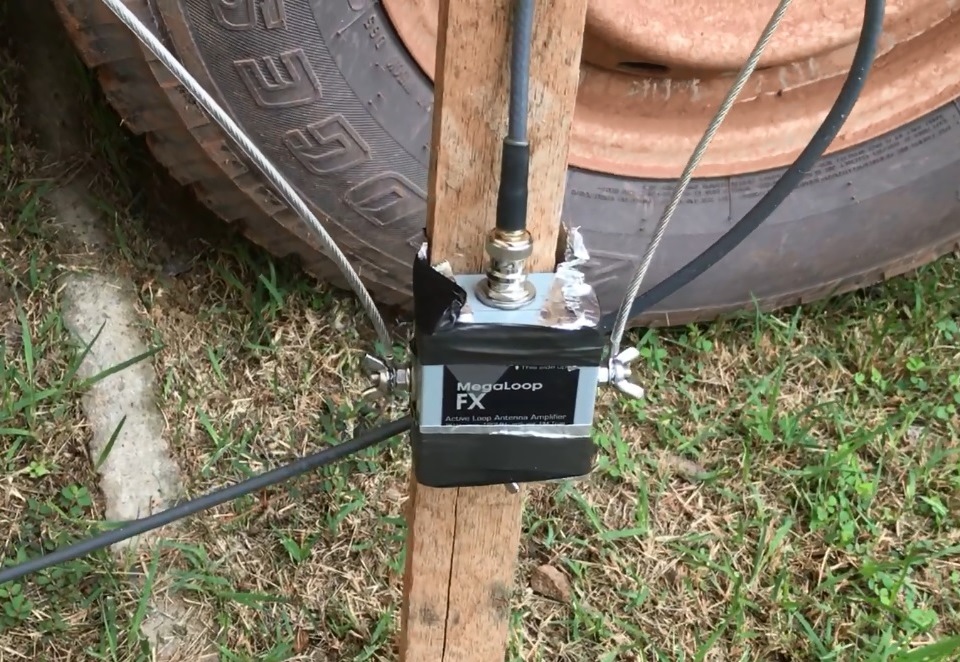
As expected, the performance of the MegaLoop FX antenna, coupled to the SDRPlay RSP DUO was very impressive and for the duration of my stay in the jungle, I spent most of my time DXing with this set-up. I always take a portable radio and this trip was no different. I packed my XHDATA D-808, which I consider to be one of the very best portable radios currently on the market. What a shame then that it developed an audio fault and rendered basically useless. This then left me to focus 100% on my portable SDR set-up. It did not fail to deliver. I spent many evenings scanning the HF bands for tropical band signals and as usual, copied many stations that I can hear in the UK, but of course with much stronger and clearer signals. For example, Rádio Clube do Pará was literally booming into Rio Capim day and night with a huge signal of S9 +10. Other stations that are much more difficult to hear in the UK were also copied with very nice signals and these included Radio Tarma Peru, Emisoras Pio XII Bolivia, Rádio Educação Rural Brazil and Radio Cultural Amauta Peru, amongst many others.
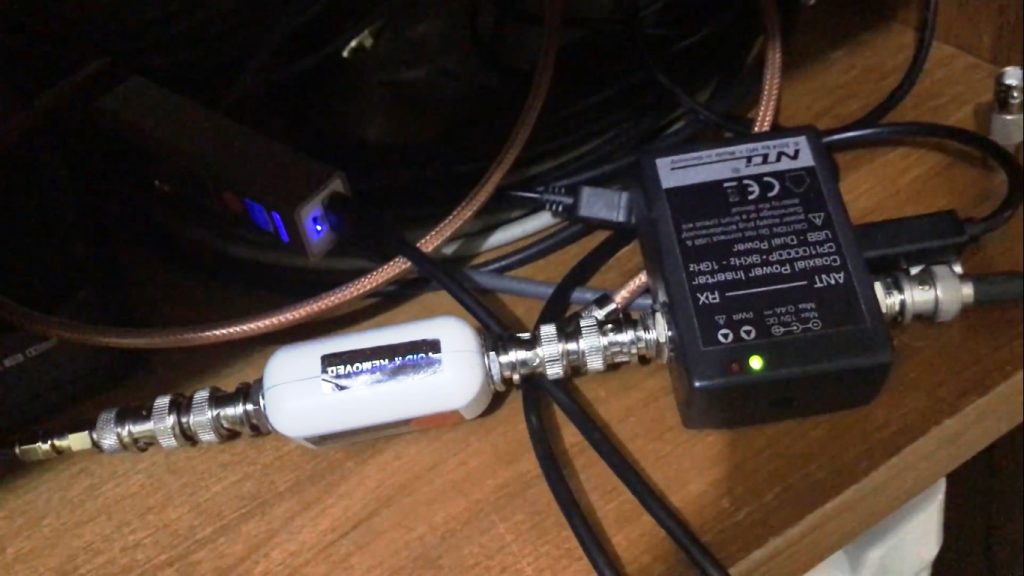
More impressively, I copied some signals that are just about impossible to hear in the UK these days and in fact my reception was excellent confirmation that they are still on-air. These included the never-heard-in-Europe (to my knowledge) Radio Sora de Congonhas Brazil and the very rarely heard Radio Huanta 2000 Peru, Radio Alvorada de Londrina Brazil, Radio Difusora do Amazonas Brazil and Radio 9 de Julho Brazil.
Perhaps most impressive was the performance on Longwave. Catching transatlantic signals on medium wave can be difficult and usually only possible with any regularity using sophisticated equipment. Longwave catches are even rarer. Whilst in Brazil, I managed to copy weak signals from BBC Radio 4 on 198 kHz, Radio Algérie Chaîne 3, on 252 kHz and actually quite good signals from Medi 1 in Morocco on 171 kHz and RTL Luxembourg on 234 kHz. This level of performance surprised me. My listening environment, although remote, was certainly not optimal – there was nearly always some electrical noise present. However, by locating the MegaLoop FX outside (and carefully taping up the partially open window to stop millions of tropical bugs getting into my room!) I managed to copy these transatlantic signals on longwave. Simply a brilliant experience all round.
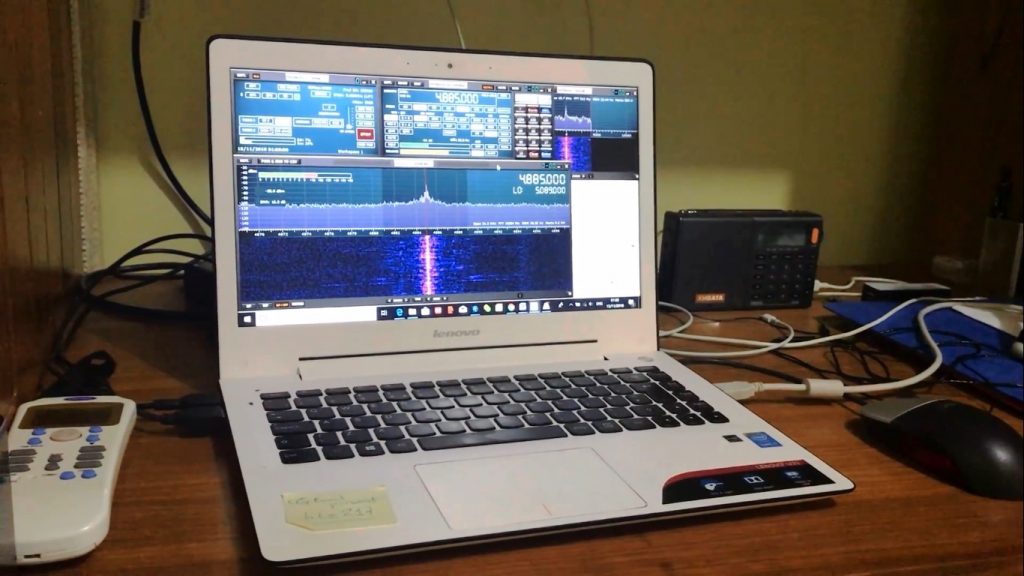
In conclusion, if you’re looking for a truly portable, high-performance DXing set up that can easily be taken on trips abroad etc., right now, the MegaLoop FX is the best possible antenna choice. With performance rivalling the Wellbrook loops, but small enough to fit into a backpack, this antenna is a no-brainer for hard-core DXers and casual listeners who want to maximise signal-to-noise and their listening pleasure. If you go over to my YouTube channel Oxford Shortwave Log, you will find over 50 reception videos from this trip, many of which feature MegaLoop FX antenna. Please also check out the links below which feature a selection of the many catches I made on shortwave and the catches on longwave I mentioned. I wish you all the best of DX for 2019!
LINKS TO RECEPTION VIDEOS: SHORTWAVE
- https://www.youtube.com/watch?v=m3gpP7O6TNo Radio Tarma 4774.9 kHz, Peru
- https://www.youtube.com/watch?v=FejhEsVIpo4 Radio Cultural Amauta 4955 kHz
- https://www.youtube.com/watch?v=PCEO5n65szg Emisoras Pio XII 5952.46 kHz
- https://www.youtube.com/watch?v=f90uzA2R3ZQ Radio 9 de Julho 9818.65 kHz
- https://www.youtube.com/watch?v=M4k2ATMybIU Sora de Congonhas 4774.75 kHz
- https://www.youtube.com/watch?v=9cRnsrb_XPU Radio Mosoj Chaski 3310 kHz
- https://www.youtube.com/watch?v=YILW30XYPzc Radio Huanta 2000 4747.32 kHz
- https://www.youtube.com/watch?v=zgbD68WoU84 Alvorada de Londrina 4862 kHz
- https://www.youtube.com/watch?v=IZ8Z-vxnVWk Rádio Educação Rural 4925 kHz
- https://www.youtube.com/watch?v=_NchbTEBBvw Difusora do Amazonas 4805 kHz
- https://www.youtube.com/watch?v=TvfJg15El1c Exotic FT8 decodes in Rio Capim
LINKS TO RECEPTION VIDEOS: LONGWAVE
- https://www.youtube.com/watch?v=nRTirzxFQm4 Medi 1 Nador Morocco 171 kHz
- https://www.youtube.com/watch?v=8r7-7kNzq8Y RTL Luxembourg 234 kHz
- https://www.youtube.com/watch?v=LpAybhTLGcI Radio Algérie Chaîne 3, 252 kHz
- https://www.youtube.com/watch?v=OXUFs-mYDIE BBC Radio 4 198 kHz
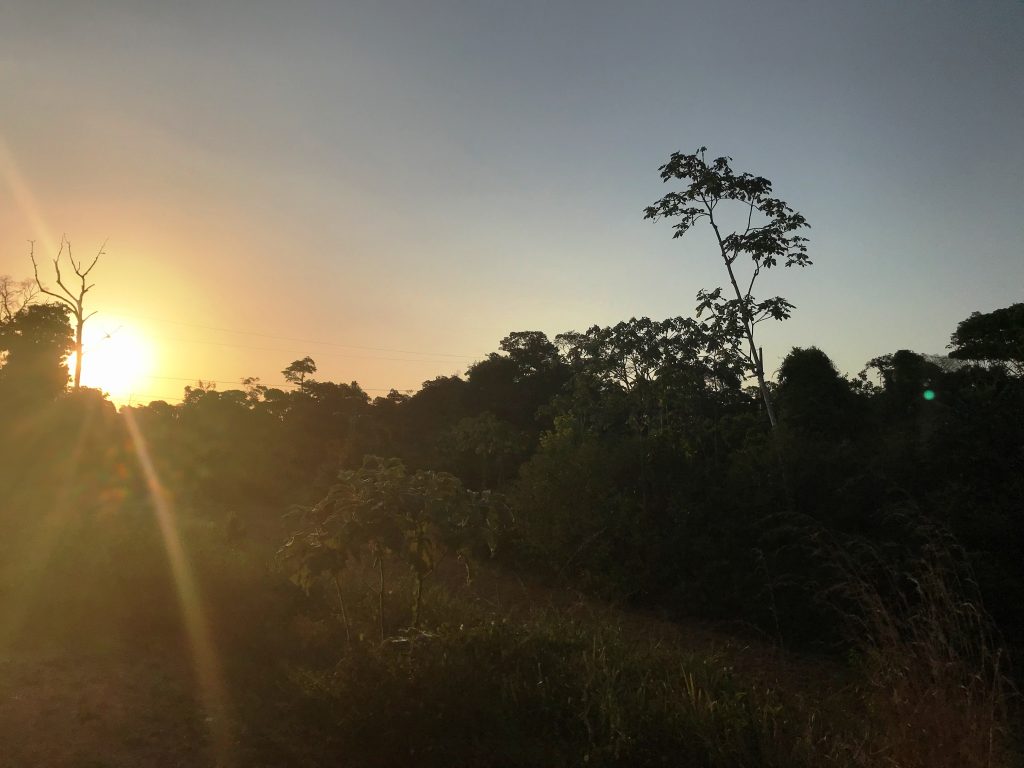
Clint Gouveia is the author of this article. His well-known YouTube channel ‘Oxford Shortwave Log‘ has more than 2,500 reception videos using a multitude of portable, table-top and SDR receivers.
MegaDipol MD300DX Tips and Tricks
MegaDipol MD300DX
The MegaDipol has been available since May 2018 and is becoming increasingly popular. I have received many queries regarding the correct assembly of this antenna. In these notes I would like to show how easy it is to assemble and erect the MegaDipol.
The right installation: “It can be so easy”
It does not take much to put up the MegaDipol MD300DX correctly and should not take more than 15 minutes. A second pair of hands would be helpful but is not absolutely necessary. The following items are sufficient:
- 1x MegaDipol MD300DX
- 1x Pole mount bracket
- 1x non-metallic pole
- 1x Coax cable (H155, Hyperflex 5 etc.) with a 90°- angled BNC connector
- 2x Cable ties
- 1x Cross tip screwdriver
- 1x 10mm open end wrench
….and here we go
The MegaDipol MD300DX can be erected in various ways. Experience has shown that best results are achieved when the antenna is installed vertically. For a stable installation I recommend ordering the pole mount when you order a MegaDipol antenna. You can make do with two additional cable ties but the pole mount makes the installation much more stable. Continue reading
Mini adapter cable fro the Airspy HF+
I got a request from a customer who wanted to connect an Airspy HF + to the GI300. The problem is that a BNC adapter and the GI300 are much thicker than the HF + receiver. You could of course take an adapter cable. But the GI300 disconnects the ground and therefore the cable must be very short to avoid interference.
Now I have made the customer a very short piece of Hyperflex 5 with the two connectors (BNC to SMA) that is only 10cm long. The result looks very nice and works well.
If you have special requests and need a solution, feel free to contact us at office@bonito.net . We’ll see how we can help.
Adapter cables availabe here: https://hamradioshop.net/en/Coax-cables/Adapter-cables/
Keep Listening
Dennis
Adapter cabels / Jumper / Pigtails
More and more we are getting requests from customers who would like to buy cables with all sorts of connectors already attached. That is why we have started to produce and offer custom-made cables.
In the new section “Adapter Cables” you can now order various cables with all sorts of connectors., e.g., SMA male on PL-socket or SAM male on N male. The maximum length of a custom-made cable is 500m.
The number of possibilities is unlimited and we plan to expand this category further. If you have a special request, please, ask us and we will make you an offer.
Continue reading
Testing the GI300 Galvanic Isolator for noise suppression
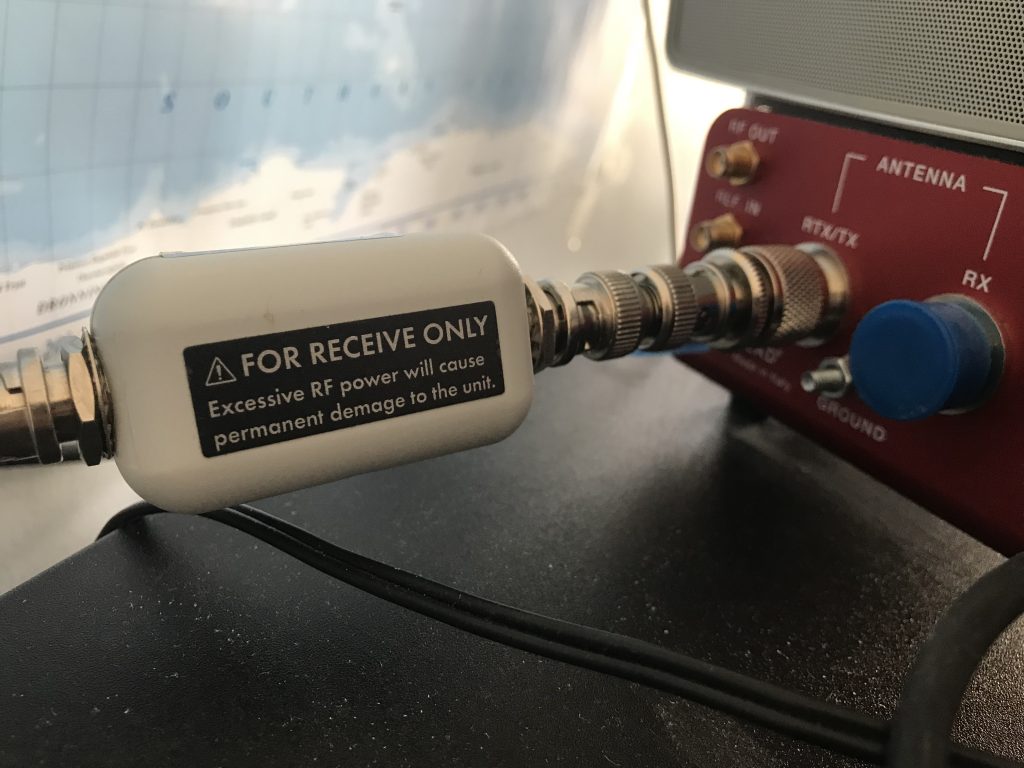
My QTH suffers very badly from local QRM and of course many DXers and radio aficionados have the same problem. This has resulted in my not being able to conduct any MW DX in the early evenings; in fact I’m not able to operate with even a reasonable noise floor until well after midnight when the neighbors have switched of TVs etc. and gone to bed. Thus, I’m usually up half the night when I want to DX on Medium Wave and similarly with Shortwave. Thank goodness for the recording facility on the Elad FDM software. If it weren’t for that, I’d have gotten even less sleep these past two years. Continue reading


